Cat GPS Collar vs. RF Cat Tracker: What is the best way to track your cat?
Every cat owner knows that our feline friends have a knack for disappearing acts. One moment they’re lounging on the couch, the next they’re nowhere to be found. For peace of mind and the safety of your adventurous kitty, tracking devices can be a game-changer. But with so many options out there, which is the best choice for your cat? In this article, we’ll dive into the world of cat tracking devices, comparing the popular cat GPS collars with RF (radio frequency) trackers like Tabcat. Choosing the right tracking device isn't just about the technology; it also involves understanding your cat's unique behaviors and needs. Different cat breeds have varying activity levels and roaming patterns, which can significantly influence which type of tracking device might be best suited for your pet. By considering both the technology and your cat’s individual characteristics, you can make an informed decision that ensures their safety and your peace of mind.
How do cat GPS collars work?
Cat GPS collars use GPS technology to determine your cat’s location by communicating with a network of satellites in the sky orbiting the Earth. This means that heavy cloud cover, storms, or areas where there’s not a strong mobile service can interfere with the accuracy and frequency you receive tracking information. Once the location data is collected, it is transmitted to your smartphone or computer via mobile networks, allowing you to monitor your cat’s movements.
Pros of using a cat GPS collar
- Wide range tracking: GPS collars can track your cat over large distances. If your feline has a habit of wandering far from home, this feature can be invaluable.
- Frequent updates: Most GPS collars offer regular updates reporting every 5 minutes, 1 minute or even 30 seconds, so you can see where your cat is at any given moment. This is particularly reassuring if your furry friend goes missing.
- Historical data: Some GPS devices provide a history of your cat’s movements, giving you insight into their roaming patterns.
Cons of using a cat GPS collar
- Signal dependency: GPS trackers require a strong mobile signal to work effectively. If your cat ventures into areas with poor signal, rural areas, indoors or where there’s no clear line of sight to the sky the tracker might not be able to communicate their location.
- Subscription fees: GPS collars often come with ongoing subscription fees, which can range from $90 to over $150 per year. Over time, these costs can add up, making GPS collars a more expensive option.
- Size and weight: Many GPS collars are bulky and heavy, weighing between 0.9 and 3.5+ ounces. This can be uncomfortable for your cat, making it suitable only for larger cats and the additional weight on their neck can cause discomfort or even health issues over time.
- Battery life: GPS trackers are known for their short battery life, often needing recharging every 2 – 7 days. This can be a hassle and might leave your cat untracked at critical times.
- Lack of accuracy over small distances: GPS devices often lack precision when it comes to pinpointing your cat's exact location in a small area or if they are trapped in a covered space. This can make it difficult to find your cat if they are hiding or stuck somewhere.
- Health concerns: There is ongoing debate about the potential impact of frequencies constantly emitted by GPS devices so close to the cat's head. While definitive evidence is lacking, some pet owners are concerned about the long-term exposure to these frequencies.
How do RF cat trackers work?
Now, let’s switch gears and talk about RF cat trackers, using Tabcat as an example. RF trackers use radio frequency signals to locate your cat. Unlike GPS devices, RF trackers don’t rely on satellites or mobile networks. Instead, they communicate directly with a handheld device and tend to transmit only whilst locating, guiding you to your cat’s exact location with remarkable precision.
1. Sending and receiving signals
The tag emits radio waves at a specific frequency, which are picked up by the handset. This device is tuned to the tag’s frequency to avoid interference from other electronic devices.
2. Finding the direction and calculating the distance
The handset calculates the direction and distance to the tag based on the strength of the received signal. As you move closer to your cat, the signal strength increases, allowing the locator to more accurately determine your cat’s position.
3. Easy-to-use guidance
The device provides visual and auditory feedback to guide you to your cat. LED lights on the handset change color and audio beeps increase in frequency as you get nearer to the tag, helping you pinpoint your cat’s exact location.
This RF technology enables effective tracking both indoors and outdoors, bypassing the limitations of GPS in areas like buildings or underground spaces. It’s also designed to be low-power, enhancing battery life and safety for your cat.
Pros of using an RF cat tracker
- Pinpoint accuracy: RF trackers like Tabcat can locate your cat within 1 inch. This is particularly useful if your cat is indoors or you need to find their exact location.
- No subscription fees: With an RF tracker like Tabcat, there are no ongoing costs. You make a one-time purchase of about $99, and that’s it. Each Tabcat Cat Tracker pack comes with 2 tags to track 2 cats, and the handheld device can track up to 4 cats in total.
- Lightweight and compact: Tabcat’s tags are incredibly light, weighing only 0.2 ounces, making them safe and comfortable even for the smallest cats and kittens.
- Long battery life: RF trackers have a significantly longer battery life compared to GPS devices. Tabcat’s battery typically lasts between four and twelve months, depending on usage.
- Works indoors and outdoors: RF technology doesn’t rely on satellite signals, so it works effectively indoors and outdoors. This is ideal for locating cats that might be hiding in a neighbor’s garage or a basement.
Cons of using an RF cat tracker
- Range limitations: RF cat trackers have a more limited range compared to GPS tracking collars. While GPS can track your cat over miles, RF trackers typically have a range of a hundred to a thousand feet depending on location with greater range in wide open spaces. This range is generally sufficient for most domestic cats, as they usually do not wander very far from home. The Secret Life of the Cat documentary data supports this, showing that cats tend to stay within a relatively close area.
- No historical data: Unlike GPS trackers, RF trackers don’t provide historical data of your cat’s movements. They only offer real-time location tracking.
Detailed comparison: cat GPS collars vs. RF trackers
1. Accuracy and precision: One of the most critical factors in choosing a tracker is accuracy. GPS devices can identify your cat’s location, but the accuracy can vary significantly based on signal strength and environmental factors and of course they can move in the meantime whilst waiting for the location to come back. On the other hand, RF trackers like Tabcat can locate your cat to within 1 inch, making them far more precise. This level of accuracy can be crucial in finding your cat quickly, especially if they are stuck indoors or in any hard-to-find place.
2. Cost considerations: GPS trackers often come with a higher upfront cost and ongoing subscription fees. For example, a GPS device might cost around $38, with an additional $14 monthly subscription fee. Over a year, this adds up to around $206, and over three years, the total cost can exceed $600. In contrast, the Tabcat Cat Tracker offers a one-time purchase price of $99 for a tracker that can monitor up to two cats, with no ongoing fees. Over the long term, RF trackers are a more cost-effective option.
3. Battery life: GPS trackers are notorious for their short battery life due to the high energy demands of regularly communicating with satellites. Most GPS devices need to be charged every few days, which can be inconvenient. In contrast, RF trackers like Tabcat have a much longer battery life, lasting up to a year depending on usage. This means less hassle and more reliable tracking.
4. Size and weight: The size and weight of the tracking device are also crucial, especially for cats. Many GPS collars are bulky and weigh between 0.9 and 3.5+ ounces. This can be uncomfortable for cats, particularly smaller breeds. Tabcat’s RF tags, on the other hand, are incredibly lightweight at just 0.2 ounces. This makes them suitable for all cats, including kittens, and ensures they won’t be weighed down.
5. Functionality indoors and outdoors: GPS trackers work well in open outdoor spaces but can struggle indoors or in areas with poor signal reception. This limitation can be a significant drawback if your cat tends to hide indoors or in covered areas. RF trackers like Tabcat, however, work effectively both indoors and outdoors, making them a more versatile option for tracking your cat no matter where they are.
Why some cat owners prefer RF trackers like Tabcat
Given the various factors, it’s clear why many cat owners prefer RF trackers like Tabcat over GPS devices. The pinpoint accuracy, lack of subscription fees, lightweight and small design, long battery life, and versatile indoor/outdoor functionality make RF trackers a superior choice for most cats. Additionally, the peace of mind that comes with knowing you can find your cat quickly and easily is invaluable.
Conclusion
Choosing the right tracking device for your cat is a crucial decision that depends on various factors, including cost, accuracy, battery life, and your cat’s behavior. While GPS collars offer wide-range tracking and updates via your phone, they come with significant drawbacks like subscription fees, short battery life, and bulky design. In contrast, RF trackers like Tabcat provide pinpoint accuracy, no ongoing costs, a lightweight and comfortable fit, long battery life, and effective indoor and outdoor functionality.
For cat owners looking for a reliable and cost-effective way to keep track of their feline friends, RF trackers like Tabcat are the clear winner. They offer the best combination of precision, convenience, and affordability, ensuring that you can always locate your cat quickly and easily, no matter where their adventures take them.
 UK
UK
 USA
USA
 GLOBAL
GLOBAL

